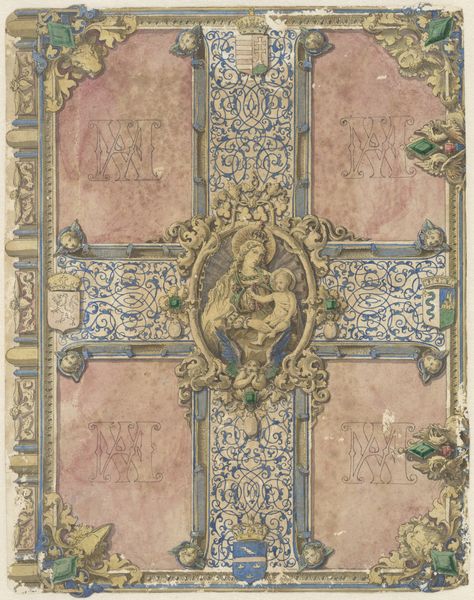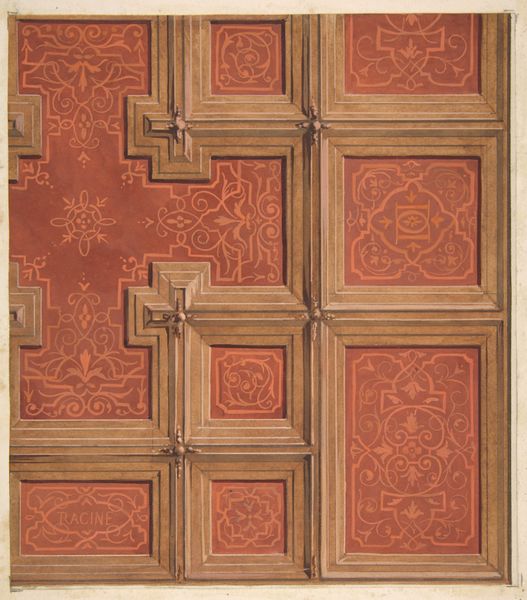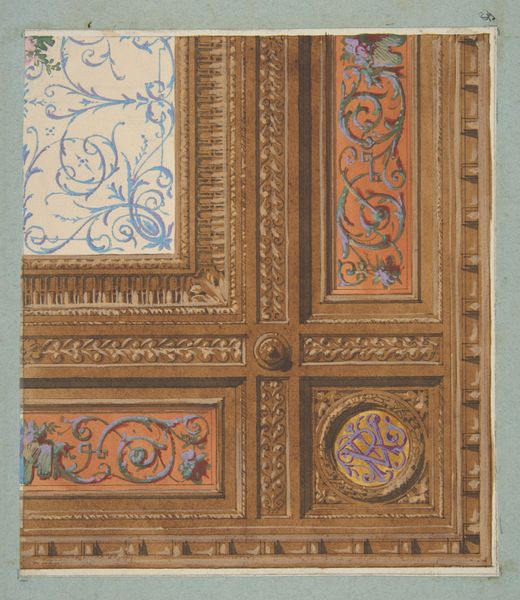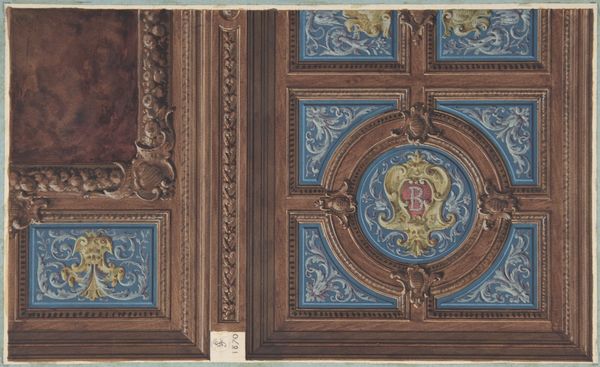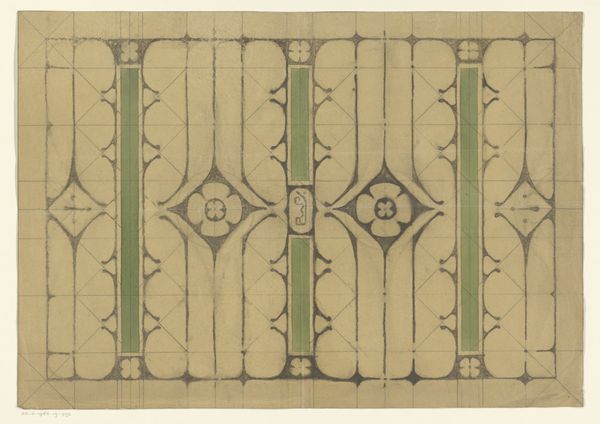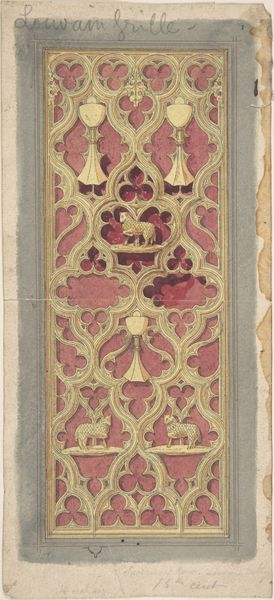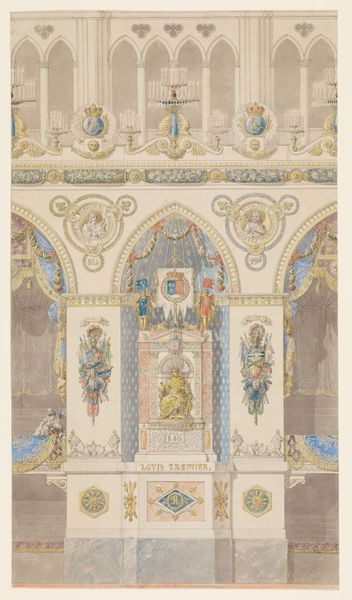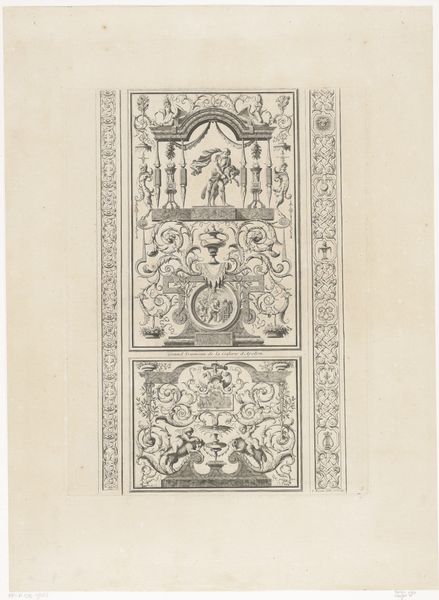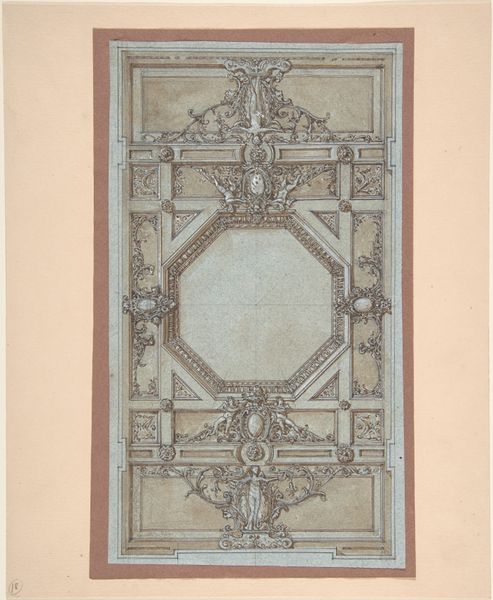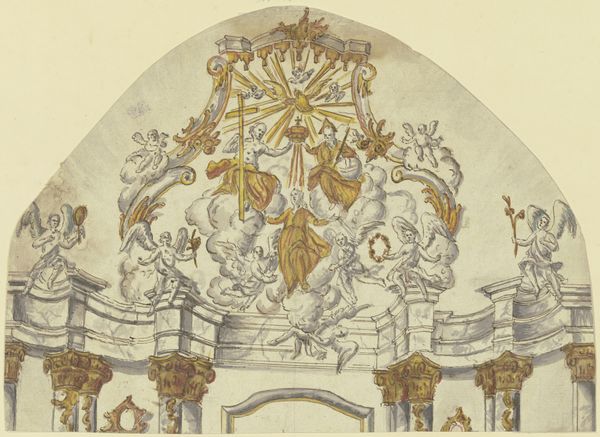
drawing, guilding, paper, watercolor, ink
#
drawing
#
guilding
#
paper
#
11_renaissance
#
watercolor
#
ink
#
academic-art
#
miniature
Dimensions: height 286 mm, width 279 mm, height 309 mm, width 290 mm
Copyright: Rijks Museum: Open Domain
Curator: Looking at this detailed design, we have an exquisite “Design for a Jeweled Book Binding” by Frédéric-Jules Rudolphi, created sometime between 1845 and 1860. Editor: My first impression is the almost overwhelming intricacy. It feels so lavish, and even claustrophobic in its detail. It’s hard to believe this is a design, the execution looks like a completed precious object. Curator: The level of detail certainly speaks to the societal role of the book, particularly religious texts, as precious objects. It’s academic art meant to impress and reflect power. Think about who would have commissioned and possessed a book bound like this. Editor: Precisely. Considering it’s a design featuring expensive gemstones, guilding and delicate watercolor on paper, it begs the question of production. Who were the hands involved in executing something so meticulous? What was their labor worth in contrast to the value of the materials and the patron’s status? Curator: It prompts reflections on the historical context. Bookbinding was experiencing a resurgence as an art form. The design itself, particularly the crucifixion scene in the center, echoes medieval illuminated manuscripts but is rendered with the refinement that characterizes 19th-century academic taste. Editor: It’s such a compelling tension between the almost mechanical precision of the design and the sensuality of the materials. You can almost feel the weight of the gemstones and imagine the coolness of the metalwork. Did Rudolphi actually execute these, or simply envision them? I’m curious about his material practice. Curator: Those are important questions, and they remind us that even a design reveals much about social values and the way art objects embody both power and spiritual beliefs. Editor: Absolutely, and by focusing on the process and the tangible, we reveal some of the socio-economic realities that shaped artistic creation during the mid-19th century. The hand, the labor and materiality are key here.
Comments
No comments
Be the first to comment and join the conversation on the ultimate creative platform.
